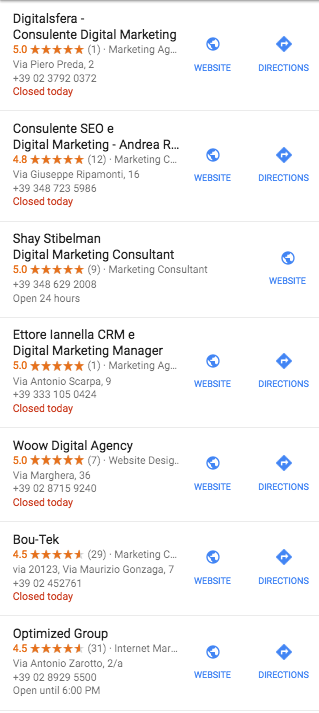OMG is there more SEO stuff to do in order to appear on the first page of the Google results page!?
There is always something to do when SEO is concerned. Local SEO is something you need to take care of only if you’re a local business, though.
SEO is not only for the internet anymore
If you’ve read my past article about the state of SEO in 2017 you might think that SEO is only for websites wanting to gain more visitors. But that is not necessarily the case. In fact, Google tells us that more than half of the searches done on their platform are performed on mobile devices, probably by people on their way to the store.
Let’s dive right into local SEO with Google My Business
Unless you’re not interested in having your business on Google, opening a Google My Business is your first priority. This is the place where you add information about your business, like photos, opening times, address, phone number and website.
Just follow the guidelines to make sure you’re filling your profile out to completion.
This is also where people can leave reviews and feedback, to which you can answer and engage clients.
While having the information about your business is important, having reviews, on the other hand, is smart. Because when appearing on a list with other businesses, people will usually be attracted to the one with the most 5-star ratings.
Pro-tip: get your clients to rate your business on Google by giving them a QR code to scan that will bring them directly to the rating page, or by sending them an email asking them to spend 2 minutes rating you.
Offering a percentage off the next acquisition could be a great incentive for them to do it.
Use Schema to have the same information on your website
As far as On-Page local SEO goes, you’re gonna want to make sure your website has all the important business information appearing on your website, and have it tagged so that search engines understand it better.
This tagging method is called Schema, which follows a very specific list of elements and rules, as to give it a universal standard.
You can put this list in your website footer, so that people will always have that info handy. Otherwise you could create a dedicated contact info page.
What’s important is that you insert this information into your website exactly as the standard requires. Of course some geek already created an automated tool to help you do this.
Find your competitors and do some competitive benchmarking

Nothing worse than searching for your business category on a search engine, and not finding your brand name in the list.
Whether you’re not on it, or you’re not in the position you would like to be, performing such a check and verifying what your competitors are doing in order to appear, is always good practice.
After searching and receiving the results list, mark down the competitors names and start spying on them using tools like SEMRush, ahrefs or Similarweb to understand what it is they’re doing, what works for them, and what is missing from your local SEO strategy.
Don’t forget you’re not the only player in the local SEO game, so make sure you’re following the rules, using the right tools and adding the right info in order to participate and increase your chances of winning [clients].

